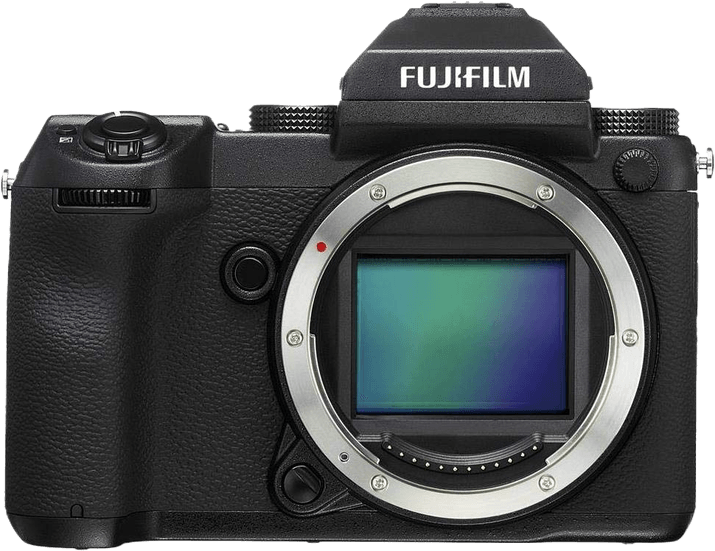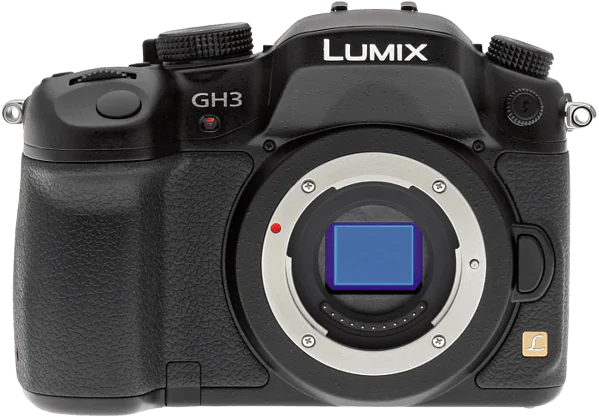Fujifilm GFX 50S vs Panasonic Lumix DMC-GH3 Comparison
Fujifilm GFX 50S

Panasonic Lumix DMC-GH3

The Fujifilm GFX 50S outperforms the Panasonic Lumix DMC-GH3 with a score of 78/100 compared to 53/100. Both cameras are mirrorless and were released in 2016 and 2012, respectively. They share similar dimensions, with the GFX 50S being slightly larger at 148 x 94 x 91mm and heavier at 920g, while the GH3 is 133 x 93 x 82mm and weighs 550g.
The GFX 50S justifies its higher score and price of $6499 with better overall performance. On the other hand, the GH3 has the advantage of being more compact and lightweight, as well as having a more affordable launch price of $1300.
Taking these factors into account, the Fujifilm GFX 50S offers superior performance for those willing to invest, while the Panasonic Lumix DMC-GH3 provides a more budget-friendly and portable option.
Fujifilm GFX 50S vs Panasonic Lumix DMC-GH3 Overview and Optics
The Fujifilm GFX 50S outperforms the Panasonic Lumix DMC-GH3 in optics with a score of 77/100 compared to the GH3’s 50/100. Both cameras share common specifications like the CMOS sensor type and a processor for image processing. However, the similarities end there, and each camera excels in different areas.
The Fujifilm GFX 50S boasts a higher megapixel count of 51, a medium format sensor size, and a Fujifilm G lens mount. These features contribute to the camera’s superior image quality and resolution. Additionally, the GFX 50S has image stabilization, which helps in capturing sharp images even in challenging shooting conditions.
On the other hand, the Panasonic Lumix DMC-GH3 has a lower megapixel count of 16.05, a smaller micro four-thirds sensor size, and a Micro 4/3 lens mount. Despite its lower score, the GH3 offers a faster shooting speed of 20 frames per second, which is advantageous for capturing fast-moving subjects. However, it lacks image stabilization, which may result in less sharp images in certain situations.
The Fujifilm GFX 50S is the clear winner in terms of optics, offering better image quality, resolution, and image stabilization. This camera is ideal for photographers who prioritize high-quality images and require a versatile camera for various shooting conditions.
The Panasonic Lumix DMC-GH3, while not as strong in optics, excels in shooting speed, making it a suitable choice for action photography or situations where capturing fast-moving subjects is crucial. However, the lack of image stabilization may limit its performance in some scenarios. Ultimately, the choice between these two cameras depends on the individual’s specific needs and priorities in photography.
Fujifilm GFX 50S vs Panasonic Lumix DMC-GH3 Video Performance
When comparing the video capabilities of the Fujifilm GFX 50S and the Panasonic Lumix DMC-GH3, it is essential to note that the Fujifilm GFX 50S does not have any video functionality. This fact sets the two cameras apart in terms of video capabilities. Therefore, the comparison focuses solely on the video features of the Panasonic Lumix DMC-GH3.
The Panasonic Lumix DMC-GH3 has a video score of 70 out of 100. This camera offers Full HD video recording with a maximum resolution of 1920 x 1080 pixels. It provides a maximum video frame rate of 60 frames per second, ensuring smooth and high-quality video capture. Additionally, the Lumix DMC-GH3 features built-in time-lapse functionality, allowing users to create stunning time-lapse sequences without the need for external equipment or software.
Taking into account the video capabilities of the Panasonic Lumix DMC-GH3, it is clear that this camera is suitable for users who require video functionality in addition to still photography. The absence of video features in the Fujifilm GFX 50S makes it less versatile for those who need a camera that can handle both photo and video tasks. However, it is essential to remember that a camera’s overall quality is not solely determined by its video capabilities.
Fujifilm GFX 50S vs Panasonic Lumix DMC-GH3 Features and Benefits
The Fujifilm GFX 50S outperforms the Panasonic Lumix DMC-GH3 with a feature score of 87/100, while the GH3 scores 65/100. Both cameras share several specifications, including touchscreen capabilities, the absence of GPS, and WIFI connectivity.
The Fujifilm GFX 50S is superior in several aspects. Its screen size of 3.2 inches is larger than the GH3’s 3-inch screen, providing a better viewing experience. The screen resolution of the GFX 50S, at 2,360,000 dots, far exceeds the GH3’s 614,000 dots, resulting in a crisper and clearer display. Additionally, the GFX 50S offers Bluetooth connectivity, which the GH3 lacks.
On the other hand, the Panasonic Lumix DMC-GH3 does have one advantage over the GFX 50S: its flip screen. This feature allows for greater flexibility in shooting angles and can be particularly useful for capturing images from challenging perspectives or for vlogging purposes.
Taking these points into consideration, the Fujifilm GFX 50S emerges as the superior camera in terms of features, with its larger and higher-resolution screen and added Bluetooth connectivity. However, the GH3’s flip screen may appeal to those who require more versatility in their shooting angles. Ultimately, the choice between these two cameras depends on the specific needs and preferences of the user.
Fujifilm GFX 50S vs Panasonic Lumix DMC-GH3 Storage and Battery
The Fujifilm GFX 50S outperforms the Panasonic Lumix DMC-GH3 in the storage and battery category, scoring 57/100 compared to the GH3’s 27/100. Both cameras accept SD, SDHC, and SDXC memory cards, but the GFX 50S has a clear advantage with its two memory card slots versus the GH3’s single slot. This feature allows users to store more images and video files, or even separate file types for better organization.
In terms of battery life, the Lumix GH3 holds a slight edge with 540 shots per charge, compared to the GFX 50S’s 400 shots. However, this advantage is not enough to overcome the significant difference in overall storage and battery scores.
Despite the GH3’s longer battery life, the Fujifilm GFX 50S is the superior choice in this category due to its dual memory card slots and compatibility with faster UHS-II cards. The Panasonic Lumix DMC-GH3’s single memory card slot and lower score make it a less attractive option for those prioritizing storage and battery capabilities.
Fujifilm GFX 50S vs Panasonic Lumix DMC-GH3 – Our Verdict
Are you still undecided about which camera is right for you? Have a look at these popular comparisons that feature the Fujifilm GFX 50S or the Panasonic Lumix DMC-GH3:

